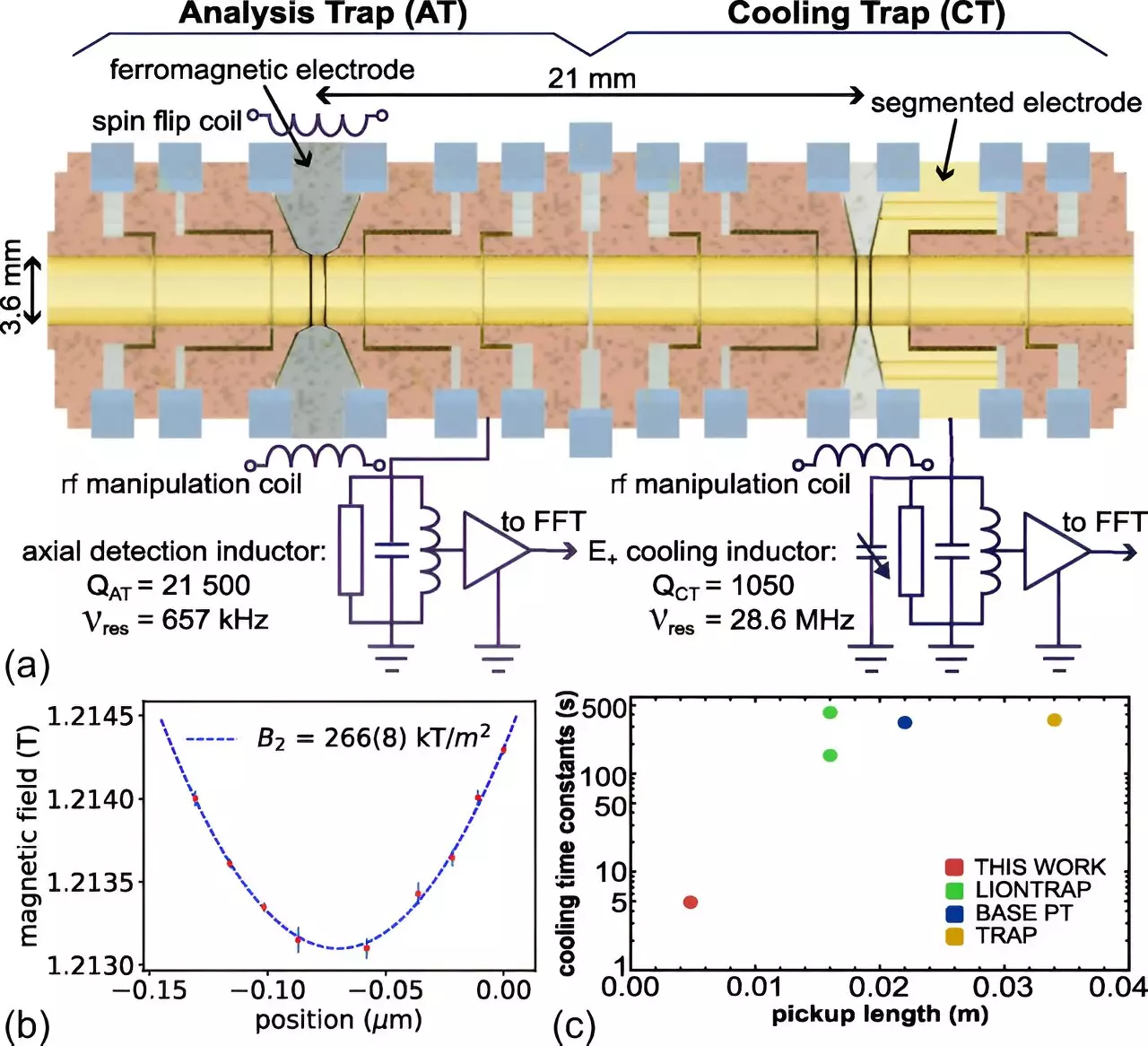The question of why the universe contains matter and very little antimatter has puzzled scientists for decades. According to the standard model of particle physics, matter and antimatter should have been created in equal amounts during the period following the Big Bang. The collision of matter and antimatter particles results in annihilation and the conversion of mass into energy. Therefore, the presence of material objects in the universe implies an existing asymmetry between matter and antimatter.
The BASE collaboration, led by Professor Dr. Stefan Ulmer from Heinrich Heine University Düsseldorf, aims to shed light on this matter-antimatter imbalance. By developing a new trap that can cool individual antiprotons at a much faster rate than previous methods, the researchers at CERN have made a significant breakthrough in experimental physics. This advancement allows for more precise measurements of the mass and magnetic moment of antiprotons, potentially identifying asymmetries between matter and antimatter.
The Importance of Precision
To expand the standard model of particle physics, scientists require extremely accurate measurements of fundamental physical parameters. The BASE collaboration involves several universities and research facilities, working together to investigate whether matter particles and their corresponding antimatter particles have identical weights and magnetic moments. By studying spin-flip quantum transitions of ultra-cold antiprotons, researchers hope to determine if there are subtle differences between protons and antiprotons at a molecular level.
A Breakthrough in Cooling Technology
Dr. Barbara Maria Latacz and her team at CERN have developed a new cooling method that can reduce the temperature of antiprotons to 200 mK in just eight minutes. This is a significant improvement from previous techniques that required 15 hours to achieve the same results. The combination of Penning traps in a Maxwell’s daemon cooling double trap has enabled researchers to selectively cool the coldest antiprotons for precise measurements, improving the efficiency and accuracy of the experiment.
The development of mobile particle traps opens up new possibilities for transporting antiprotons from CERN to other research facilities for further studies. Professor Ulmer envisions constructing a particle trap that can enhance measurement accuracy by tenfold, expanding our understanding of the differences between protons and antiprotons. The ability to store and analyze individual particles for extended periods offers unparalleled insights into the world of particle physics.
The Legacy of Paul and Dehmelt
The advancements in trapping technology owe their origins to physicists like Wolfgang Paul and Hans G. Dehmelt, who pioneered the development of Paul traps and Penning traps, respectively. Their groundbreaking work, recognized with the Nobel Prize in 1989, laid the foundation for modern particle trapping techniques and opened new avenues for experimental physics.
The efforts of the BASE collaboration and their groundbreaking research at CERN represent a significant step forward in unraveling the mysteries of matter and antimatter. By combining cutting-edge technology with precision measurements, scientists are inching closer to understanding the fundamental nature of our universe. The quest for answers continues, fueled by curiosity and a relentless pursuit of knowledge in the field of particle physics.


Leave a Reply